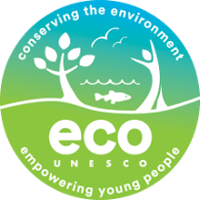Biodiversity Senior
Project
| BUG BUDS |
| Batitat |
| Evergreens |
| The Nature room |
| Dark Sky matters |
| Beeing the change you want to see |
| Kinsale Community School Orchard |
| Nicola Bourke |
| Composting Climate Action |
| Tree Amigos |
| ReWildiNG (Replenish Wildflowers’ Native Growth) |
| The Natural World And What We Can Do To Protect It. |
| Bug Burrows |
| Building for Biodiversity |
| The Beauty and the Butterfly |
| Green footprints |
| Bee Brilliant, Boost Biodiversity! |
| Irish Wild Life Club |
School/Organisation
| Drimnagh Castle Secondary School |
| Drimnagh Castle Secondary School |
| Bandon Grammar School |
| Meanscoil Iognaid Ris |
| NATURE INSPIRES – Nature experiences for all age-groups |
| St Marys Secondary school |
| Kinsale Community School |
| Mercy College Sligo |
| St Michael’s Holy Faith, Finglas |
| St. Jarlath’s College |
| Skerries Community College |
| Ursuline Secondary School Blackrock Cork |
| Loreto Secondary School, Bray |
| Rockbrook Park School |
| St. Brigid’s Secondary School |
| St Mary’s Holy Faith Secondary School Killester |
| Patrician Academy |
| Colaiste Mhuire Post Primary School |
Biodiversity Junior
Project
| A place to nest |
| Buggingham Palace |
| Bringing Birds Back |
School/Organisation
| Rockbrook Park School |
| Wesley College Dublin |
| Kinsale Community School |
Biodiversity Super Junior
Project
| Our Local Water Quality |
| Wildlife Pond |
| Who is my neighbor? Wild animals around me and how to respect and support them |
| Foroige Connect Castlebar |
| Where does the Salmon come from – a wholesome reflection on our local river Moy |
School/Organisation
| Timoleague NS |
| Timoleague NS |
| Nature Inspires |
| Foroige Hub, Castlebar |
| St. Michael’s National School Cloonacool |


